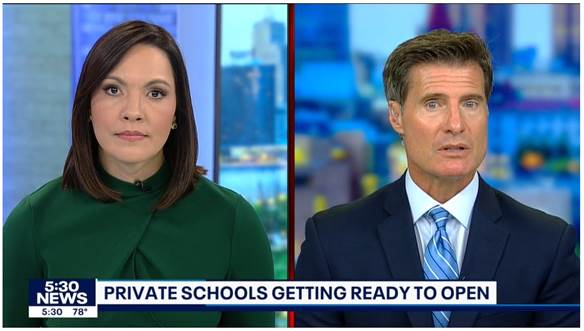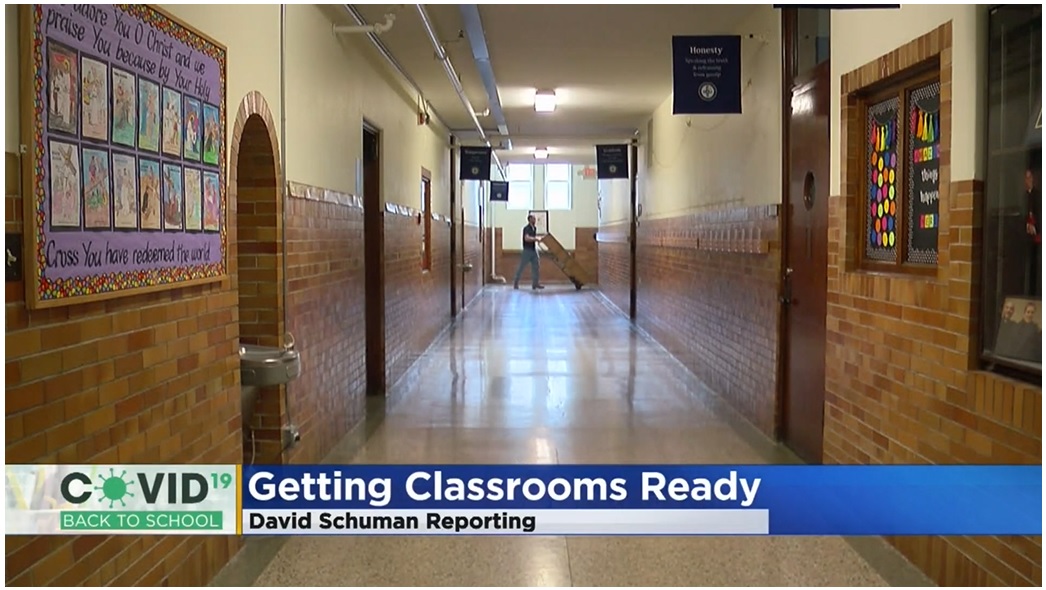Reading proficiently by the end of third grade is not only critical for a child’s future educational outcomes but also future career opportunities, earning potential, and economic mobility.
Statewide, an alarming and growing number of third graders aren’t meeting reading proficiency benchmarks, according to new data from the Minnesota Department of Education. As measured by the department’s 2025 Minnesota Comprehensive Assessment (MCA), nearly 54 percent of third graders aren’t proficient in reading. For the fourth year in a row, third-grade reading proficiency has declined — going from 48.2 percent in 2021 to 45.9 percent this past spring. In 2018, pre-COVID, 55.7 percent of third graders were reading at grade level.
How does your district measure up? Are reading scores where they should be or is there room for improvement? Use the database below to see reading proficiency results from the 2025 Minnesota Comprehensive Assessment. According to the Minnesota Department of Education, students who do not take the test are excluded from the assessment results and do not impact a district’s general MCA proficiency calculation.
Note: If you can’t find your district on the list, the student count was too small to report.
MCA test data is not the only indicator of student learning, but it is “one of several tools used to understand how students are doing,” according to the Minnesota Department of Education. Assessment results measure how well students are mastering the academic and proficiency standards set by the department.
Until something better comes along that can be used statewide as an objective measure to help hold schools and districts accountable for fulfilling their responsibility of equipping students with basic literacy skills, it is what we have to work with.
Arguments against use of MCA data as an accountability metric cite participation and student opt-outs as reasons to dismiss the results altogether. But student participation is high — 98.2 percent of third graders took the reading MCA this past spring — and students who do not take the test are excluded from general assessment results (which is what I am reporting) and do not impact a district’s MCA proficiency calculation, as stated by the Minnesota Department of Education. This is different from the state’s North Star accountability system, which identifies schools for targeted support using academic achievement calculations that count all students who do not participate in testing the same way as students who are not proficient, which impacts averages. Those results are reported separately from general MCA results.
The MCA results also mirror literacy challenges that have presented themselves on national reading assessments. Fourth-grade reading has experienced steep score drops since 2019, and the percentage of students without basic reading skills as measured by the National Assessment of Educational Progress remains at an all-time high (39 percent). States that have prioritized strong literacy policy for years, notably Mississippi, outperform Minnesota on these assessments in a number of ways while spending far less for the better results.
In 2023, the Minnesota Legislature took notice and overhauled the state’s approach to literacy instruction through the Reading to Ensure Academic Development Act, known as the READ Act, with the goal of having every Minnesota child reading at or above grade level every year, beginning in kindergarten. To help accomplish this goal, it requires teacher preparation programs and districts to use evidence-based reading strategies in their instruction that include teaching phonemic awareness, phonics, vocabulary, fluency, and comprehension. Statewide literacy screenings are also required to help identify students at risk of falling further behind.
It will take time to know if improvements will result from these changes, as the law is still being implemented. It will also be important that there is buy-in during this implementation phase among all who need to execute the reforms. Having good policy on the books is one thing, making sure it is carried out as intended is another.
“Passing the READ Act was an essential first step, but passing a law does not guarantee better outcomes for students,” writes the Ciresi Walburn Foundation.
To see meaningful progress, schools and districts must train teachers well, monitor progress, and ensure that what’s happening in the classroom reflects what the law intends.
Some teachers have been hesitant to shift away from long-standing instructional methods — many of which are not aligned with the science of reading. This reluctance is understandable; teachers were often trained in programs that emphasized discredited reading strategies, and making a full transition to structured literacy takes time, support, and coaching. But without these changes, the law won’t deliver the outcomes it promises.
Many school districts have also been slow to adopt evidence-based literacy curricula, despite clear direction in the law to do so. While some districts have taken decisive action, others have delayed key decisions or continued using outdated materials. In part, this is due to the time it took for the Minnesota Department of Education to finalize a list of approved literacy programs.
Without “a greater sense of urgency at every level — from the Department of Education to the classroom — the READ Act risks becoming another well-intentioned policy that fails to improve results for students,” concludes the Ciresi Walburn Foundation.
Parents with students who can’t afford to fall behind another year in reading as they wait for curriculum choices to be made, re-training to finish, and full implementation should be empowered to access a learning environment equipped to meet their learning needs today. With Education Savings Accounts (ESAs), Minnesota families could use the dollars already allocated for their child’s education to cover pre-approved expenses such as tuition at another school, reading tutoring, and special education services, to name a few. It’s an opportunity to fully customize a child’s education and meet individual students where they are at right now because there are only so many years in their K-12 journey, and they can’t wait.
Gov. Tim Walz should also opt Minnesota into the federal tax-credit scholarship provision that will take effect January 1, 2027. This will give public school students the opportunity to use the scholarships to pay for reading tutoring and supplemental learning expenses. Not only does this help the student but it is helpful for teachers, as it sends students back into the classroom better prepared.
Parents and students can make sure they are working on reading skills at home, as well. The Minnesota Department of Education recently released the Families READ toolkit, which gives families ideas and tools to help their kids learn to read. It has a section for each core component aligned with the science of reading and how each area should progress with age to lay a solid foundation for reading, plus practice and play games that incorporate the skills into everyday activities.
To be sure, test scores are not the only metric that measure school-quality progress, but something is needed to press our education system to fulfill its responsibility of providing core academic skills. That “something” will continue to be debated, but let’s make sure students don’t pay the price.










![[downloaded during free trial]](https://oakmn.org/wp-content/uploads/2025/11/iStock-1430368205-120x86.jpg)


